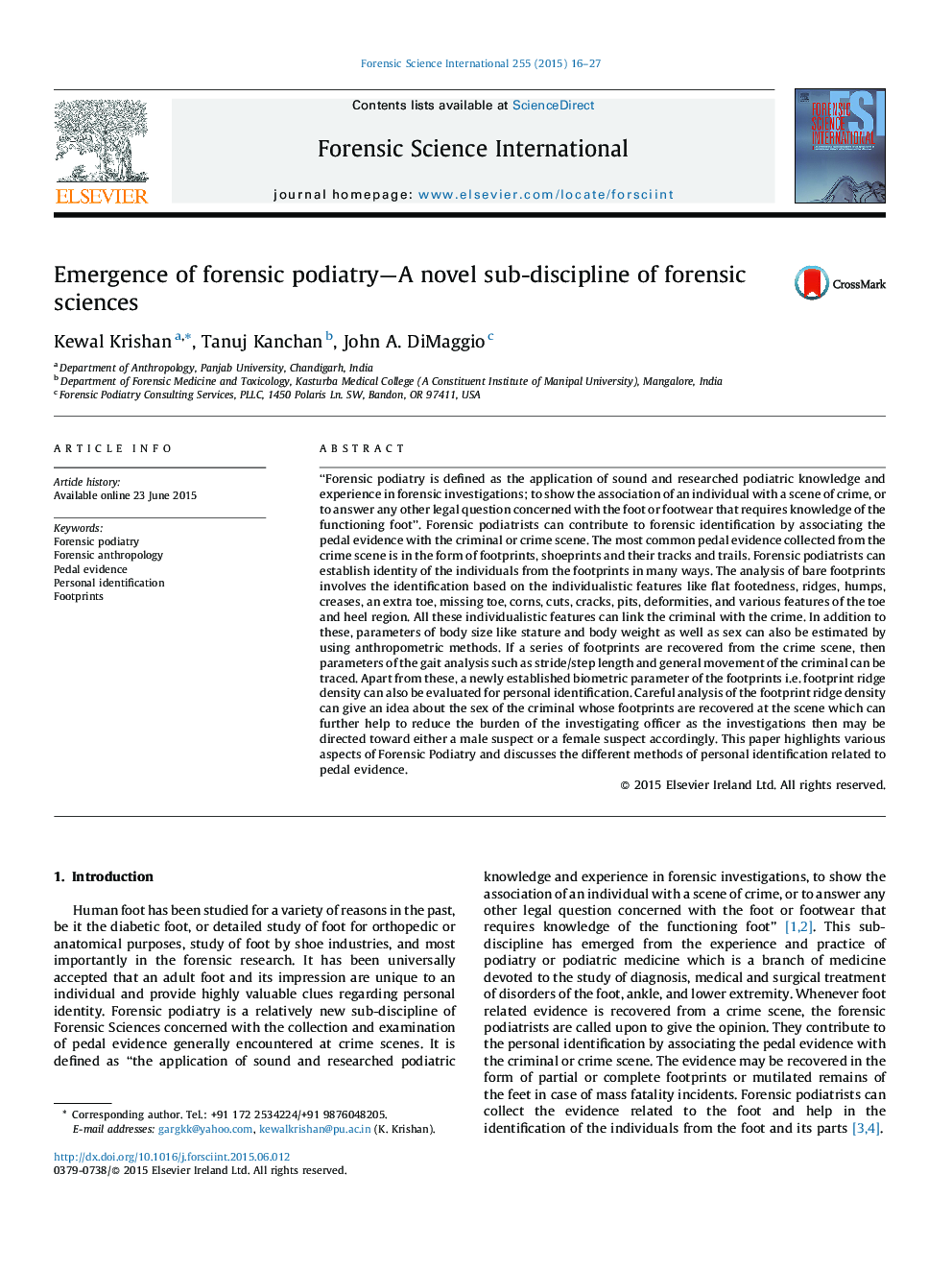| کد مقاله | کد نشریه | سال انتشار | مقاله انگلیسی | نسخه تمام متن |
|---|---|---|---|---|
| 95304 | 160425 | 2015 | 12 صفحه PDF | دانلود رایگان |
• Forensic podiatry deals with the pedal evidence encountered at the crime scenes.
• This is an overview of forensic podiatry in academics, research and practice.
• It discusses personal identification from foot and prediction of biological profile.
• It also describes footprints and their detailed analysis in forensic examinations.
• Discusses friction ridge analysis, gait, casework, errors and quality control.
“Forensic podiatry is defined as the application of sound and researched podiatric knowledge and experience in forensic investigations; to show the association of an individual with a scene of crime, or to answer any other legal question concerned with the foot or footwear that requires knowledge of the functioning foot”. Forensic podiatrists can contribute to forensic identification by associating the pedal evidence with the criminal or crime scene. The most common pedal evidence collected from the crime scene is in the form of footprints, shoeprints and their tracks and trails. Forensic podiatrists can establish identity of the individuals from the footprints in many ways. The analysis of bare footprints involves the identification based on the individualistic features like flat footedness, ridges, humps, creases, an extra toe, missing toe, corns, cuts, cracks, pits, deformities, and various features of the toe and heel region. All these individualistic features can link the criminal with the crime. In addition to these, parameters of body size like stature and body weight as well as sex can also be estimated by using anthropometric methods. If a series of footprints are recovered from the crime scene, then parameters of the gait analysis such as stride/step length and general movement of the criminal can be traced. Apart from these, a newly established biometric parameter of the footprints i.e. footprint ridge density can also be evaluated for personal identification. Careful analysis of the footprint ridge density can give an idea about the sex of the criminal whose footprints are recovered at the scene which can further help to reduce the burden of the investigating officer as the investigations then may be directed toward either a male suspect or a female suspect accordingly. This paper highlights various aspects of Forensic Podiatry and discusses the different methods of personal identification related to pedal evidence.
Journal: Forensic Science International - Volume 255, October 2015, Pages 16–27
